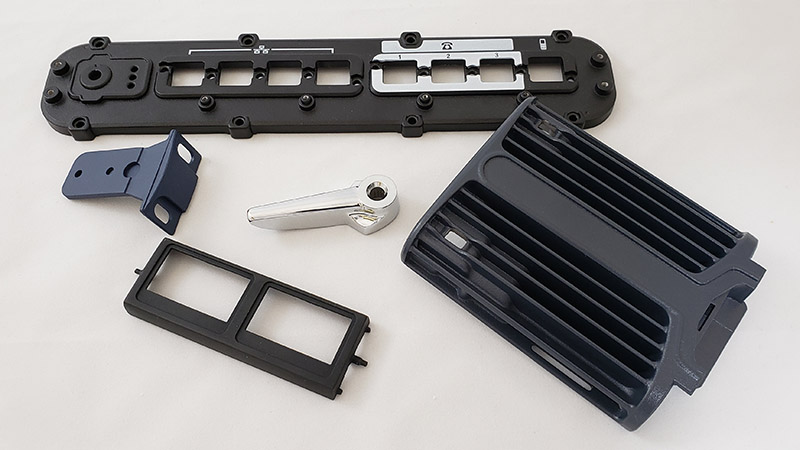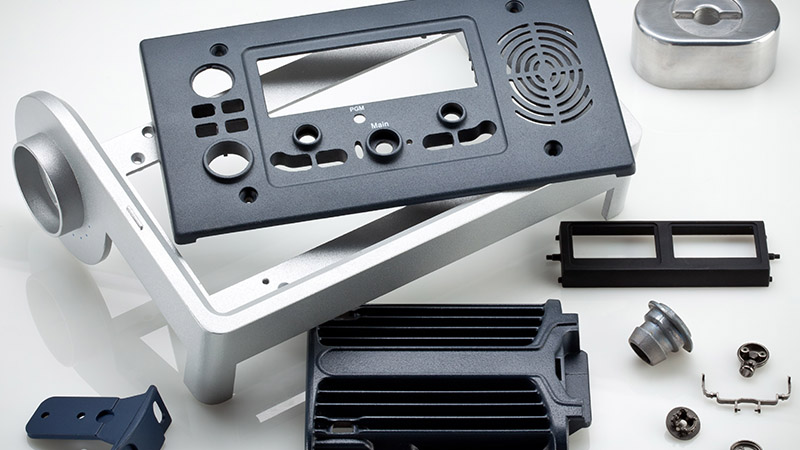How an Aluminum Foundry delivers consistent casting solutions for all industries
Wiki Article
Recognizing the Production Process and Maintenance Practices for Light Weight Aluminum Shop Products
The manufacturing procedure for light weight aluminum shop products is detailed and calls for a thorough understanding of numerous phases. From the melting of aluminum at heats to various casting approaches, each step plays an important duty. Additionally, upkeep techniques assure devices continues to be effective and items are devoid of flaws. Nonetheless, the intricacies of these procedures and their influence on item quality raising vital questions about finest techniques and cutting-edge strategies in the industry.Introduction of Light Weight Aluminum Foundry Products
Aluminum shop items are essential components in various markets, using a mix of light-weight stamina and rust resistance. These products are commonly used in markets such as auto, aerospace, and building and construction, where durability and efficiency are critical. Aluminum's low thickness makes it an excellent product for applications requiring reduced weight without sacrificing structural honesty. The versatility of light weight aluminum permits the creation of complicated geometries, dealing with diverse design needs.Furthermore, light weight aluminum shop items can be customized with different alloys to enhance specific residential properties, such as boosted thermal conductivity or raised hardness. Their resistance to oxidation and deterioration guarantees longevity, making them ideal for both indoor and outside applications. The combination of these attributes adds to the expanding choice for aluminum in modern manufacturing. As markets seek to enhance performance and sustainability, aluminum shop items continue to play an important role in meeting these needs.
Melting Refine: Changing Light Weight Aluminum
The melting procedure is an essential step in the manufacturing of aluminum factory products, as it transforms solid aluminum into a molten state ideal for spreading. This procedure generally occurs in a heating system, where scrap light weight aluminum or ingots are heated to temperature levels around 660 levels Celsius. The option of heating system-- be it electrical, gas, or induction-- influences the performance and cost of melting.During melting, careful factor to consider is offered to the removal of impurities, such as oxides and other contaminants, which can negatively impact the top quality of the final product. Fluxes might be contributed to help in this filtration process, improving the fluidity of the molten steel.
Additionally, temperature level control is vital to guarantee harmony and protect against getting too hot, which can lead to oxidation. The melting procedure not just prepares light weight aluminum for casting but additionally plays a substantial function in identifying the integrity and residential properties of the final foundry products.
Casting Methods in Light Weight Aluminum Foundry
Various casting methods are utilized in light weight aluminum foundries to develop top notch components, each fit to different applications and requirements. Among one of the most frequently used approaches are sand spreading, die casting, and financial investment casting. Sand casting uses a mix of sand and binder to form mold and mildews, permitting complex forms and huge parts (aluminum metal casting). Die spreading, identified by the high-pressure injection of liquified aluminum right into steel molds, produces repeatable and specific elements, ideal for mass production. Investment casting, or lost-wax casting, involves producing a wax version that is covered in a ceramic shell, making it possible for complex designs and great information. Each strategy has its benefits; sand casting is affordable for low-volume production, while die spreading uses performance for high-volume runs. Investment spreading is preferred for components calling for extraordinary precision and surface coating. Selecting the suitable technique relies on factors such as production quantity, component intricacy, and material residential or commercial properties
Completing Procedures for Light Weight Aluminum Elements
After casting techniques have actually formed the light weight aluminum parts, finishing processes play a considerable duty in enhancing their performance and visual appeal. These processes commonly include machining, surface area therapy, and coating applications. Machining involves specific elimination of material to achieve wanted dimensions and surface top quality. This is essential for ensuring that components fit effortlessly right into their desired applications.Surface area treatments, such as anodizing and polishing, are employed to boost deterioration resistance and improve aesthetic attributes. Casting Foundry. Anodizing, particularly, gives a safety oxide layer, making the aluminum more aesthetically attractive and resilient

Upkeep Practices for Long Life
Applying normal upkeep methods is crucial for ensuring the longevity of aluminum shop items. Regular inspections ought to be conducted to determine deterioration, as very early discovery can prevent pricey repair work and prolong the life-span of components. Cleaning up equipment and equipment frequently lessens the risk of contamination, which can negatively affect product top quality. Lubrication of moving parts is likewise crucial, as it reduces rubbing and wear, improving functional performance.In addition, the application of a precautionary maintenance timetable assists in systematically dealing with prospective issues before they rise (aluminum metal casting). This consists of monitoring for leakages, guaranteeing correct positioning, and calibrating equipment. Staff training on appropriate handling and maintenance strategies promotes a culture of care, which is vital for sustaining item stability. Ultimately, recording upkeep tasks offers important understandings into performance fads, allowing for informed decision-making concerning future upkeep strategies
Quality Assurance and Testing in Light Weight Aluminum Foundry Manufacturing
Quality control and testing are paramount in light weight aluminum shop production, as they ensure that end products meet defined criteria and client assumptions. This procedure begins with raw product evaluation, guaranteeing that aluminum alloys adhere to needed make-ups. Throughout the production cycle, in-process inspections are performed to check criteria like pressure, material, and temperature level circulation.
Different examinations-- such as dimensional checks, visual evaluations, and non-destructive testing-- are performed to recognize any kind of issues as soon as casting is full. Mechanical buildings, consisting of tensile stamina and solidity, are evaluated via standard screening approaches.
Moreover, adherence to industry criteria, such as ISO and ASTM, is important for guaranteeing item high quality. Statistical process control techniques are view publisher site typically utilized to assess production information and help with constant renovation. By carrying out strenuous quality assurance actions, light weight aluminum shops can improve product integrity and lessen waste, inevitably causing better client satisfaction and functional efficiency.
Regularly Asked Questions
What Are the Ecological Impacts of Aluminum Factory Operations?
Light weight aluminum foundry procedures can cause significant environmental impacts, including air pollution from emissions, water contamination from waste discharge, and energy intake contributing to greenhouse gas exhausts, ultimately affecting neighborhood environments and area wellness.How Do Light Weight Aluminum Prices Affect Factory Manufacturing Decisions?
Aluminum prices Recommended Site substantially influence foundry production decisions; higher costs might result in decreased outcome or increased effectiveness actions, while lower prices can urge enhanced manufacturing and investment in new modern technologies to enhance competition and success.What Security Procedures Are Important in Aluminum Foundries?
Vital safety actions in light weight aluminum foundries include safety equipment, proper air flow to decrease breathing of fumes, routine devices maintenance, training on emergency procedures, and adherence to security procedures to prevent accidents and injuries among employees.Can Aluminum Be Recycled, and Exactly How Is It Processed?
Aluminum can indeed be reused. The process involves collection, melting, and reforming the product right into brand-new items, substantially decreasing power usage and environmental effect compared to main aluminum production while protecting worldly high quality.What Prevail Issues in Aluminum Spreading and Their Causes?

The manufacturing process for aluminum foundry items is complex and needs a detailed understanding of numerous read review stages. Aluminum factory items are essential elements in numerous sectors, supplying a mix of lightweight toughness and rust resistance. The melting process is a fundamental action in the production of aluminum shop products, as it changes strong aluminum right into a molten state suitable for spreading. Implementing regular maintenance practices is vital for making sure the long life of aluminum factory items. Quality control and screening are critical in light weight aluminum factory manufacturing, as they ensure that last products meet specified requirements and customer assumptions.
Report this wiki page